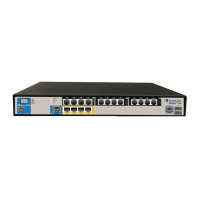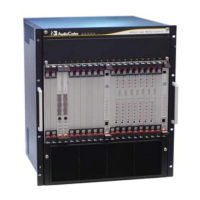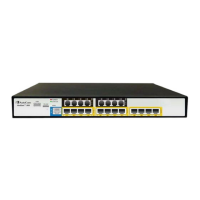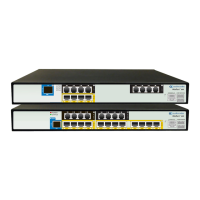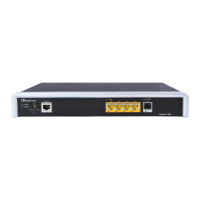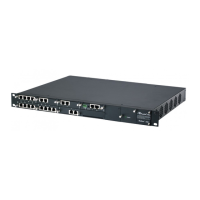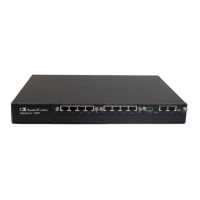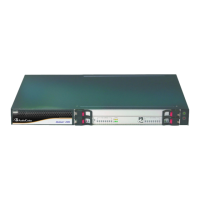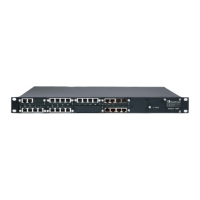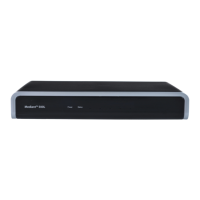CHAPTER23 Digital PSTN
Mediant 800 Gateway & E-SBC | User's Manual
➢ To configure DSP pattern detector:
1. On the DSP Settings page (Setup menu > Signaling & Media tab > Media folder > DSP
Settings), do the following:
a. From the 'IPMedia Detectors' drop-down list [EnableDSPIPMDetectors], select Enable.
b. From the 'Enable Pattern Detector' drop-down list [EnablePatternDetector], select
Enable.
2. Configure the number (e.g., 5) of consecutive patterns to trigger the pattern detection event,
using the ini file parameter [PDThreshold].
3. Configure the patterns that can be detected by the Pattern Detector, using the ini file parameter
[PDPattern]. For example:
PDPattern = 84, 85, 212, 213 ; for idle patterns 54, 55, D4 and D5
Configuring Private Wire Interworking
You can configure the device to interwork in a private wire system, where one side is IP (SIP)
based and the other side is legacy, digital PSTN (E1/T1 CAS) based.
The feature is applicable only to IP-to-Tel calls.
Private wire is a generic term used to describe static point-to-point voice connections between two
locations. Private Wires are typically used by a number of communities such as military, railways,
emergency services, and financial services. Historically, private wire services were achieved by
running direct private connections (telephone cables) between offices in the same building. In
private wire services, dialing is unnecessary and there is a direct, "always on" and immediate
connection.
Trading turret systems are also part of private wire services. A trading turret or dealer board is a
specialized telephony key system that is generally used by financial traders on their trading desk.
Trading turrets enable users to prioritize incoming call activity from customers or counter-parties
and make calls to these same people instantaneously by pushing a single button to access
dedicated point- to-point telephone lines (commonly called Ringdown circuits). No dialing is
necessary; the user simply picks up the handset or pushes a button and a dedicated line is seized.
Thus, many turrets have multiple handsets and multi-channel speaker units, allowing immediate
connection with multiple parties (e.g., 30 channels). These channels remain constantly open
throughout the trading day.
Today, private wire services are evolving from digital TDM architectures to IP-based architectures.
The device can be used for interworking between these two architectures, where you have the
PSTN switch (PBX) using the E1/T1 CAS protocol on one side, and a SIP-based private wire (turret
system) trunk on the other side. The device converts the CAS channels into a SIP call with a called
and calling number and if required, passes the ABCD bit state changes through SIP messages, and
vice versa. The following diagram shows an example of private-wire interworking by the device:
- 582 -
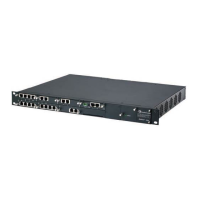
